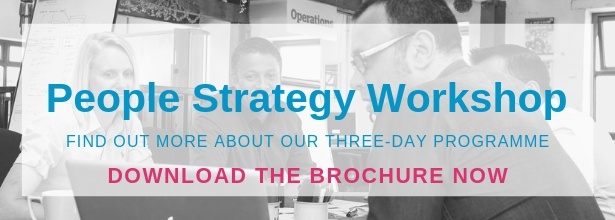 Across almost all industries and business functions we are seeing rapid growth in the use of technology to boost business efficiency and competitive advantage.
Across almost all industries and business functions we are seeing rapid growth in the use of technology to boost business efficiency and competitive advantage.
According to Emma Parry, Head of the Changing World of Work Group at Cranfield School of Management, this presents new strategic challenges for employers. Before diving in and adopting AI or Big Data, for instance, left, right and centre, organisations need to take a step back and create a strategy for how they can benefit from emerging technology to build efficiencies and improve decision making. This will not only require investment in the tech, but also considerations around organisational structures, people, strategies and processes.
With this in mind, let’s take a look at five ways in which cutting-edge technology can benefit the workplace.
1. Recruitment processes
Many recruiters rely on instinct when selecting a candidate for a role, but AI could take ‘gut feeling’ out of this process by analysing Big Data and identifying traits that the human brain might be unable to recognise - and in significantly shorter time frames. To take the use of technology further, data from social networks can be automatically pulled and added to the candidate file.
Some companies are even relying entirely on automated recruitment processes, hiring candidates without once having met them.
A successful recruitment process begins, however, with the right job description and this is another area where AI can lend a hand. Technology can be used to generate bias-free job descriptions ensuring the best candidates are reached in the first place.
2. Employee communications
Whilst the recruitment process is predominantly run behind the scenes, the front-office can also reap benefits from using robotics.
A simple and relatable example is chatbots. Chatbots are impacting the workplace significantly allowing employees to instantly and easily communicate with HR – improving their employment experience and triggering standardised HR processes without HR personnel ever needing to touch it. By digitising these processes, employees can now have access to their HR department from anywhere in the world and at any time.
Software bots could also be programmed to automatically inform employees of their employment rights, payroll details, or pension information, removing inconsistencies in the information employees receive and ensuring workers get the correct answer every time.
3. The digital workforce
Despite media messaging on large-scale job loss, AI and process automation need to be seen as an opportunity. In order to successfully implement and integrate an automation initiative in an organisation, it is essential that the strategy considers how to get buy-in from the human counterparts and a lot of this has to do with trust. A common approach to implementation is to choose a select number of processes and begin by having bots working in parallel with humans, so in case of issues there is always a human to fall back onto.
Technical considerations need to be made too, such as how the company will approach the issue of data security, cyber breaches, ethics, permissions and access.
Emma Parry believes that “there will be a need for people with a whole new skill set in coordinating machines and managing the interface between humans and technology. Employers need to be thinking now about whether they have the workforce they need for the future and how they might develop this, as well as about re-deploying and motivating those whose work is increasingly automated.”
4. Gamification
When it comes to HR, gamification presents an opportunity to offer a more engaging and meaningful experience for staff. Whilst many companies are gamifying the user experience, using technology to provide interactive learning for employees or even incentivising goals or KPIs could lead to increased performance.
The kinds of skills people develop through gamified experiences include failure management, working in a team and collaborating remotely with colleagues around the world. It can even help bring together staff from various departments or cultures, helping to break down the silos.
5. Flexible working and employee engagement
Technology gives organisations the possibility of offering even more flexible working arrangements for their employees. According to Emma Parry, the increased use of technology more broadly in organisations means staff will become increasingly dispersed, and building relationships more challenging. Some employers are identifying the need to create a social hub where employees can meet less formally to develop a more cohesive organisation.
While the possibilities are exciting, employers need to think carefully about how they can benefit from the new levels of flexibility that technology offers as well as ensure that employees do not suffer from a lack of support and employment security.
It is clear that AI, automation and other emerging technologies that are being developed at an exponential rate are not just a fad, but are opportunities that employers must seriously consider adopting now so as not to fall behind the competition.
Like with any business transformation, introducing game-changing technology into the business cannot be successfully done on a reactive basis but requires solid strategy and continued management.
For this reason, Cranfield School of Management has designed a three-day programme specifically for HR leaders in which they will learn to look at the internal and external contexts and develop a suitable People Strategy . Learn more about the People Strategy Workshop here.
Read more:





